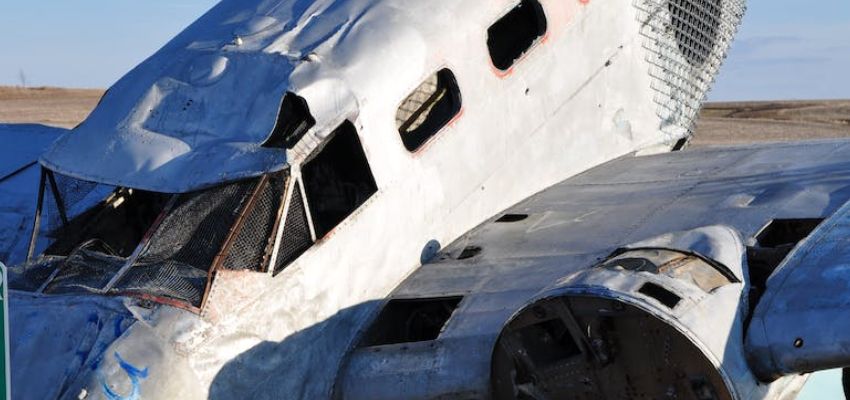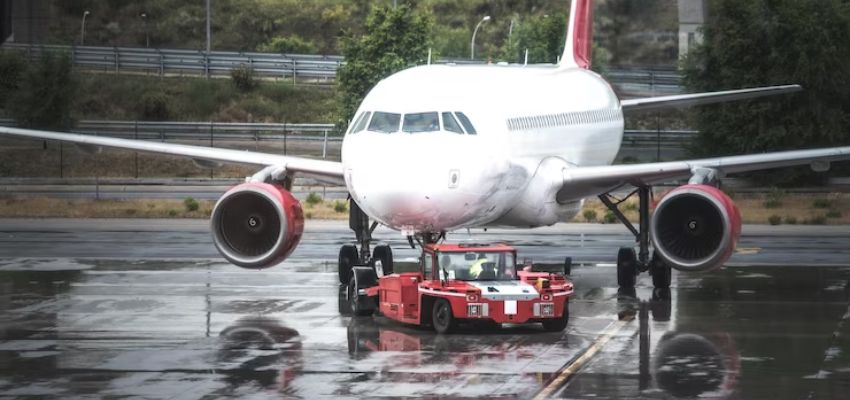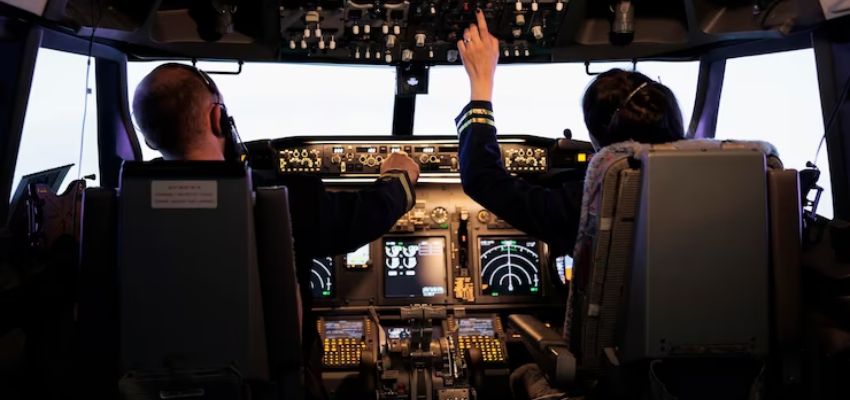
Have you ever wondered what happens in incidents like ‘plane runs out of fuel and crashes’? It could be nightmarish and one of those scenarios that aviation authorities and pilots work tirelessly to avoid. Let’s understand through this blog, some historical incidents that led to a plane falling from sky due to fuel crisis, we will explore the reasons behind the plane crash, and discuss measures taken to prevent such critical situations.

What are some cases of plane crash due to fuel exhaustion?
These incidents shed light on the dire consequences of failing to adequately monitor and plan for a sufficient fuel supply during flights.
- Ethiopian Airlines Flight 961 (1996) – This Flight 961 Boeing 767 plane falls from sky in the Indian Ocean due to fuel exhaustion resulting from a hijacking. 125 of 175 people on board, including the hijackers, died.
- East Coast Aviation Services Jetstream 3101 (2000) – This flight crashed in Pennsylvania after plane runs out of fuel near Scranton International Airport, resulting in 19 fatalities. The crash was attributed to inadequate refueling.
- Air Transat Flight 236 (2001) – This transatlantic flight 236 lost engine power over the Atlantic Ocean due to a fuel leak caused by maintenance issues but managed to glide to a successful emergency landing in the Azores, saving all 306 people on board.
- Tuninter Flight 1153 (2005) – This ATR 72 crashed into the Mediterranean Sea because the plan runs out of fuel, caused by installing the wrong fuel quantity indicators. 16 of the 39 people on board died, marking Tuninter’s first fatal accident.
- LaMia Flight 2933 (2016) – This charter flight crashed near Medellín, Colombia, killing 71 people, including members of the Brazilian football team Chapecoense. This plane falling from sky was a result of an inappropriate flight plan and pilot errors.
Learn more about the 5 Bizzare Incidents of plane crashes as it runs out of fuel.
What factors can lead to a plane runs out of fuel mid-flight and crash?

Fuel starvation incidents are the rarest of the rarest ones, but they highlight the critical importance of proper fuel management in aviation.
Despite comprehensive training and checklists, the incidents where plane runs out of fuel persist due to a range of factors –
- Improper or insufficient planning – Inadequate flight planning, such as failing to assess the potential delays or deviations, can lead to fuel wastage resulting in shortages.
- Fuel mismanagement – These incidents also remind of the errors in managing fuel distribution within the aircraft’s tanks that can result in uneven consumption. Mathematical mistakes in calculating fuel requirements can lead to inaccurate estimates.
- Poor decision-making – Pilots may delay refueling or ignore warnings about low fuel making it challenging to reach their destination safely.
- Failure to declare an emergency – Failing to communicate about inadequate fuel and not escalating it as an emergency to air traffic controllers can hinder prompt assistance.
- Mechanical problems or failures – While they occur very rarely, mechanical issues can contribute to fuel starvation incidents, often with devastating consequences. These mechanical discrepancies consume more fuel compared to the normal scenarios while operating the flight.
There are numerous factors that can contribute to ‘plane crash ran out of fuel’ includents. However, it’s essential to note that human error remains the most contributing factor behind these incidents.
Do You Know: On November 28th, the Chapecoense soccer team was en route to Colombia for a final championship game – the Copa Sudamericana. Tragically, their journey ended in disaster when their aircraft, despite having enough fuel to reach their destination, ran out of fuel just 12 miles away from the airport where they were scheduled to land. The crash claimed the lives of 71 of the 77 people on board.
What are the Fuel Mismanagement Statistics in the US?

Fuel mismanagement is a persistent issue in general aviation in the United States, with statistics revealing the severity –
- On average, more than 50 accidents annually result from fuel management problems.
- Among these incidents, fuel exhaustion accounts for 56%, while fuel starvation contributes to 35% of accidents.
- A staggering 66% of fuel management accidents occur when the destination differs from the departure airport.
- Approximately 80% of these accidents take place during daylight hours in visual meteorological conditions, with only 15% occurring at night.
What protocols do pilots follow for fuel shortages and plane crash?

To help pilots navigate this challenge, the NTSB’s report recommends five fundamental rules for safer flights.
Don’t rely solely on fuel gauges
While modern measurement systems are highly accurate, it’s crucial not to place complete reliance on fuel gauges. Pilots are encouraged to visually verify fuel quantity during their preflight inspections.
Know the aircraft’s fuel system to avoid plane crash
Understanding the aircraft’s fuel system is very crucial, especially when flying an unfamiliar aircraft. Not getting familiar with a plane’s fuel system has led to ‘plane crash ran out of fuel’ incidents with fuel to spare.
Be mindful when fueling the aircraft
Fixed base operators (FBOs) often handle fueling. It is the duty of the pilot to verify and ensure that s you receive the correct fuel grade and quantity. During pre-flight preparations, pilots need to draw a fuel sample from each tank, taking note of its color and odor to check for any contaminants.
Know when to declare a fuel emergency with ATC
In critical situations, declare a fuel emergency with air traffic control (ATC). Some pilots hesitate due to pride, but it ensures priority handling by the controller and could prevent a dangerous incident.
How do pilots handle fuel shortages in the skies?
Pilots must be well-versed in procedures related to fuel management and be prepared to communicate effectively with air traffic controllers when a plane runs out of fuel. Here’s how they handle –
MINIMUM FUEL Declaration
- It indicates that the aircraft has enough fuel to reach its planned arrival location.
- This way the pilot indicates that there’s little to no extra fuel onboard, and any deviation from the current clearance could result in potential incidents like a plane crash no fuel.
When MAYDAY FUEL is necessary
When there’s a potential fuel crisis, the pilots have the option to declare a “MAYDAY FUEL” situation.
- Pilots actually calculate the quantity of fuel required to land at the nearest suitable airstrip or airport.
- This declaration explicitly conveys the need for priority handling by air traffic control (ATC) to ensure a safe landing.
Conclusion
In conclusion, the frequency of plane runs out of fuel remains relatively low, thanks to safety protocols, well-trained pilots, advanced technology, and other stringent regulations applied by the FAA. The commercial airline industry continues to prioritize safety, sensitively handle potential fuel-related accidents, and ensure that passengers reach their destinations safely, but we still can’t neglect the possibility of crash as the most recent example is the Spirit Airlines plane crash.
Frequently Asked Questions – FAQs
Do planes dump fuel before they crash?
No, fuel dumping is a rare and highly regulated procedure used only in specific emergency situations due to weightage issues or critical problems.
How often do airlines conduct fuel checks during a flight?
Airlines conduct fuel checks at various intervals during a flight to ensure there is an adequate amount for the duration of the trip.
Are there emergency procedures if plane runs out of fuel?
Yes if an aircraft’s fuel levels are critically low, the flight crew will declare an emergency to air traffic control.
What is the role of air traffic control in fuel management?
The ATC assists in rerouting aircraft to optimize fuel efficiency and handle emergency situations when an aircraft is low on fuel, ensuring it gets priority for landing at the nearest suitable airport.
Why did Flight 174 plane runs out of fuel?
The Boeing 767 operated by Canada World Airways experienced a fuel depletion incident in Montreal. This was attributed to an error made by the ground crew during fuel calculation.
Why did Flight 143 plane runs out of fuel?
Flight 143, also known as the “Gimli Glider,” ran out of fuel due to a combination of factors, including a unit conversion error in calculating the fuel load, improper fuel indicator systems, and the failure of both engines.

